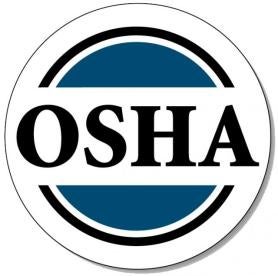As we have noted in prior blog posts, the controversial non-discrimination provisions of OSHA’s electronic recordkeeping rules have been challenged in court. The U.S. District Court for the Northern District of Texas ultimately declined to issue an injunction preventing the implementation of the rule, but specifically noted “[t]hat the court has denied injunctive relief requested by Plaintiffs is not a comment or indication as to whether Defendants will ultimately prevail on the merits. This determination is left for another day.”
After the court’s ruling, OSHA issued a memorandum to its regional administrators entitled “Interim Enforcement Procedures for New Recordkeeping Requirements Under 29 CFR 1904.35.” The memorandum establishes guidelines for inspectors for determining how employers will be cited under the new regulations in the future. Here are the high points:
-
The new regulations require the establishment of a “reasonable” reporting procedure for employees to report work-related injuries and illnesses.
-
The test for potential violation is “based on whether the employer’s procedure is unduly burdensome and/or would discourage a “reasonable employee from reporting.”
-
OSHA will focus on the “time” and “means” for filing a report (i.e., when and how to report).
-
Rigid reporting requirements that do not provide for a grace period before the employee realizes he/she has suffered an injury could be found to be unreasonable (i.e., for a repetitive stress injury occurring over time); and
-
Are there alternate means to report a work-related injury (i.e., by phone, e-mail or in person)? This will be reviewed to see it the procedure was “reasonable” as well.
-
-
The requirement to inform employees of the company’s reporting procedure may vary based on the “size of the workforce, employee language proficiency and literacy levels, the workplace culture and other factors.”
-
An employer can satisfy the requirement of notifying employees of the right to report an injury/illness and the prohibition against discrimination/discharge against them by posting the required OSHA poster.
-
Under the anti-retaliation provisions, they clarify that a citation may be issued if the adverse employment action occurred within 6 months of the citation (as compared to the 30 day statute of limitation for Section 11(c) whistleblower claims).
In addition, OSHA previously issued guidance to its regional administrators regarding the interpretation for anti-retaliation requirements related to drug testing and safety incentive programs as well. This provides some additional information to employers regarding what inspectors may be looking for in those situations.
Even with the new guidance issued from the agency, much of it may be subject to change with the new Trump administration. As we posted before, many things may change under the new administration. Only time will tell how differently OSHA will approach these issues with new leadership. However, in the meantime, prudent employers should consider modifying their reporting procedures, blanket post-accident drug testing policies and safety incentive programs until the requirements are changed.



 i
i


